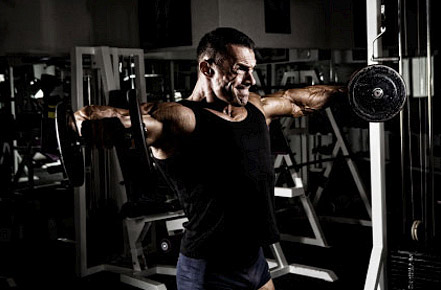7 MUST-READ BODYBUILDING TRAINING TIPS

There are many individual details that go into planning out a complete muscle building workout
Things like intensity, workout volume, duration, training layout and rest periods…
While all of these factors are very important, there’s one thing you must nail down first if you’re hoping to achieve the best results possible: proper form.
Most bodybuilders think they’re performing all of their exercises in the correct way in order to maximize muscle stimulation and growth.
In reality, most lifters make a ton of simple, fundamental mistakes that shift the stress off of the target muscles, increase the chances of injury and promote muscular imbalances.
In this article, I’m going to lay out a few simple but very powerful tips for each major muscle group to instantly increase the effectiveness of your training program.
Implement these tips during your next few workouts and I guarantee you’ll notice a huge improvement…
CHEST
Everyone wants huge pecs, but most lifters execute their pressing movements incorrectly and end up shifting the stress onto their triceps and front delts.
Next time you perform a basic pressing movement (such as a barbell press, dumbbell press or dip), put your focus on 4 things:
1) Keep your shoulder blades slightly pinched together.
2) Keep your shoulders down and back.
3) Imagine that your hands, wrists and forearms don’t even exist, and focus on doing all of the pushing through your elbows.
4) Rather than allowing your elbows to flare out at 90 degree angles as you lower the weight, keep them slightly tucked at about a 45 degree angle to your body.
These 4 tips will greatly maximize the stimulation on your chest while reducing the stress on your shoulder joints at the same time.
BACK
Just as most people’s triceps/shoulders take on the brunt of their chest training, most people’s biceps end up taking over during their back training.
The 2 main things you can do to shift the stress onto your back are:
1) Use a set of lifting straps or lifting hooks for all of your pulling exercises. This eliminates your grip from the equation and lets you concentrate fully on contracting your back muscles on every rep.
2) Just as with chest training, focus on doing all of the pulling through your elbows rather than through your hands/wrists/forearms.
BICEPS
Any time you perform a curling movement, keep your elbows at your sides and don’t allow them to drift forward as you curl the weight up.
When your elbows drift forward, the front of your shoulder starts to take over and the stimulation on the bicep is reduced.
TRICEPS
When performing tricep pushdowns, use the rope attachment instead of the straight bar attachment. Keep your elbows at your sides, and as you push the weight down, force the rope apart as wide as possible.
This will allow you to achieve a greater contraction of the triceps in comparison to pushing the resistance straight down while allowing you to target that hard-to-hit lateral head of the muscle.
SHOULDERS
Side lateral raises are a key exercise for stimulating the lateral head of the shoulder and creating greater upper body width, but most lifters perform them incorrectly and end up shifting the tension onto their traps instead.
Next time you perform a side lateral raise, lean slightly forward and keep your abs as tight as possible. By keeping your abs tight, you lock your ribcage down and this takes the traps out of the movement.
Also remember to only raise your shoulders up until they are parallel to the floor, but no higher. When you go past parallel, all of the stress is shifted onto the traps and off of the shoulders.
LEGS
Any time you perform a compound leg pressing movement (such as a squat or leg press), make sure to NOT lock out your knees at the end of each rep.
Stop an inch or two short, as this will keep the tension on your quads throughout the entire set. Trust me, you’ll feel this one.
Not only will it allow you to create more overload on the target muscles, but it will also take the stress off of your knee joints as well.
CALVES
When performing calf raises, use a slightly wider than shoulder width stance, keep a slight bend in your knees and focus on driving yourself up onto your big toe as high as possible without allowing your foot to roll outward.
This allows you to maximally stress the area of your calf where the vast majority of the mass is located.
Start employing these 7 form tips and you’ll see an immediate improvement in your ability to recruit the targeted muscles and maximize your size and strength gains.
If you found this article helpful, make sure to sign up for your FREE custom fitness plan below...




